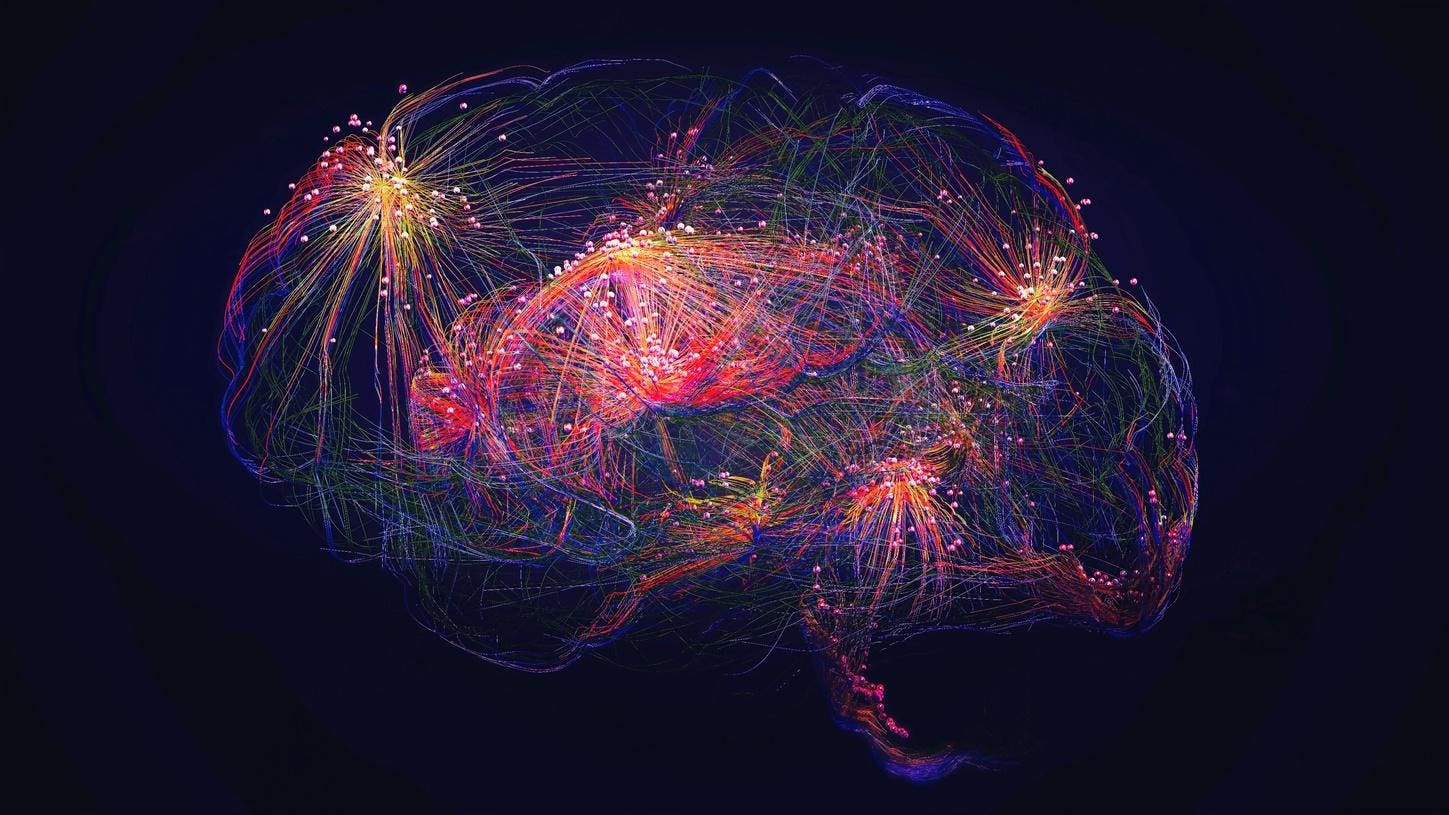Close-up photo of child’s hands touch painting rainbow on window. Family life background. Image of … More
As AI redefines our world, educators find themselves at a juncture. The question isn’t just what to teach, but how to ignite a genuine passion for knowledge in an era where information is instantly available. It is an opportunity to reignite the true heart of education – inspiration. It is time to bring that vital spark back into every classroom.
Over the past decades schools have turned into factories, focused on standardized tests and delivering content efficiently. This approach, while designed for mass instruction, often stifles the very curiosity that makes learning exciting. Students become adept at memorizing facts, but the deeper, more transformative experience of being truly inspired — of feeling a sudden, compelling urge to explore, create, or understand — often slips away. This focus on must learn versus craving to understand has left many students feeling disconnected, unprepared for a future demanding creativity and critical thought.
Power Sparks: Why Inspiration Is Your Secret Weapon
Inspiration is more than just a fleeting feeling; it’s a psychological state that unlocks new possibilities and fuels a drive to act. It’s that “aha!” moment when a concept clicks, a problem reveals its solution or a creative idea takes hold. It also happens when we touch a side of ourselves that we did not suspect. For teachers, inspired students are not just engaged; they are innovators, persistent problem-solvers, and catalysts for a vibrant learning environment. Research in positive psychology consistently shows that inspired individuals are more optimistic, have higher self-esteem, and are more likely to pursue challenging goals. When your students are inspired, they don’t just learn; they dive in, they innovate, they flourish. This deep engagement builds critical thinking, resilience, and the very problem-solving skills essential for an unpredictable future.
Think of the human brain like a muscle: it strengthens with use. Neuroscience consistently demonstrates neuroplasticity — the brain’s remarkable ability to reorganize itself by forming new connections throughout life. When we tackle complex cognitive tasks, explore new ideas, or grapple with challenging concepts, our brains build denser neural networks. Conversely, if learning is just passive absorption, it risks underutilizing the brain’s natural capacity for growth. Inspiration, by its very nature, demands active mental engagement, pushing learners beyond their comfort zones and into deeper understanding. This means students are not just absorbing information, but actively building their cognitive strength.
AI As Inspirational Ally (And A Reality Check On Cheating)
The arrival of sophisticated AI might, at first glance, seem like a threat to genuine learning, potentially reducing the need for deep thought or even enabling widespread academic dishonesty. This is a valid concern. The ease with which AI can generate text, solve problems, or provide answers raises legitimate questions about cheating and the development of authentic critical thinking skills. For instance, studies are already exploring how AI influences academic integrity and the methods needed to detect AI-generated work. However, AI’s true power lies in its capacity to become an unparalleled catalyst for inspiration when used thoughtfully. By automating mundane, repetitive tasks — from scheduling to basic research synthesis — AI frees up invaluable time and mental energy for both you and your students to engage in higher-order thinking, creative exploration, and personalized inquiry.
Consider how AI can personalize the learning journey, a critical component of sparking individual inspiration. AI-powered platforms can adapt content, pace, and teaching methods to each student’s unique needs and interests, providing tailored resources that genuinely resonate. This moves beyond a one-size-fits-all model, allowing students to delve into subjects that truly ignite their passion. AI-powered tutoring can significantly improve student outcomes, suggesting its potential to unlock individual learning pathways.
Moreover, AI can serve as a powerful collaborative partner, not just a tool. It can assist in complex problem-solving, generate diverse creative prompts, or even simulate intricate scenarios for hands-on learning. Imagine students using AI to design sustainable cities, compose original music, or conduct virtual scientific experiments that would be impossible in a traditional classroom. This shifts the focus from merely consuming information to actively creating and exploring, fostering a sense of agency and discovery. As AI takes on the role of an intelligent assistant, you, the teacher, can transition from content deliverer to mentor, guiding students through complex inquiries and nurturing their individual sparks of genius. This prepares students for a future where human-AI collaboration is the norm, not the exception, while simultaneously reinforcing the need for human critical thinking to evaluate AI outputs.
Future Classrooms: A Call For Inspiring Curricula
To fully harness AI’s potential for inspiration, we must fundamentally reimagine our educational philosophy. This calls for a deliberate shift towards “double literacy,” a concept vital for navigating our hybrid future with hybrid intelligence.
Human Literacy encompasses a holistic understanding of self and society. It cultivates critical thinking, emotional intelligence, ethical reasoning, empathy, and the nuanced understanding of human relationships and cultural contexts. It’s about strengthening the very capacities that make us uniquely human and that AI, in its current form, cannot replicate. This includes fostering deep reading, sustained concentration, and the ability to synthesize complex information from diverse sources, rather than relying solely on AI summaries.
Algorithmic Literacy is a candid understanding of what AI is, why it works, how it operates, and, crucially, its inherent limitations and ethical considerations. It means grasping the principles of machine learning, recognizing potential biases in algorithms, understanding data privacy implications, and knowing when and how to appropriately leverage AI as a tool, rather than a crutch. It’s about becoming a discerning user and a responsible co-creator with AI.
Integrating these two literacies and cultivating their complementarity is not merely an academic exercise; it is a societal imperative. Education must evolve beyond rote memorization to fostering critical inquiry, complex problem-solving, and the cultivation of uniquely human skills that complement, rather than compete with, AI. We must teach future generations not just how to use AI, but how to think with AI, and perhaps most importantly, how to think independently of AI. This prepares them to lead, innovate, and thrive in an AI-powered world. Integrating hybrid intelligence from kindergarten to K-12 can open space for everyone to thrive in an AI-infused society.
Practical Takeaway: INSPIRE
For teachers and students navigating this evolving landscape, here’s a practical framework to foster inspiration:
Ignite Curiosity: Encourage questions, explore diverse topics, and allow students to pursue their genuine interests.
Nurture Exploration: Provide tools (including AI) and opportunities for independent research and discovery.
Spark Creativity: Design projects that require original thought, imaginative problem-solving, and artistic expression.
Personalize Learning: Utilize AI to tailor content and challenges to individual student needs and learning styles.
Integrate Ethics: Discuss the ethical implications of AI and technology, fostering responsible digital citizenship.
Reflect Critically: Encourage deep thinking, analysis, and the evaluation of information from various sources.
Empower Agency: Give students ownership over their learning journey, fostering self-direction and decision-making.
The anxiety surrounding AI’s impact on our cognitive abilities is a signal, not a sentence. We stand at a pivotal moment where AI presents an unprecedented opportunity to bring inspiration back to the very heart of education. By embracing a pedagogical approach that values deep engagement, personalized discovery, and human-AI collaboration, we can cultivate a generation of learners who are not just informed, but genuinely inspired. This requires a conscious effort from educators, policymakers, and business leaders to redefine success in the classroom, moving beyond mere metrics to celebrate the ignited minds of our students.
By embracing INSPIRE, we can transform classrooms into vibrant hubs of discovery, ensuring that the next generation is not just prepared for an AI-driven world, but truly inspired to shape it.








